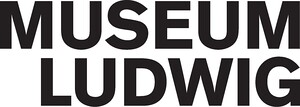Emigration – Film – Politics
HERE AND NOW at Museum Ludwig
March 3–July 1, 2018
Heinrich-Böll-Platz
50667 Cologne
Germany
Hours: Tuesday–Sunday 10am–6pm
T +49 221 22126165
info@museum-ludwig.de
Filmed, confiscated, lost: Günter Peter Straschek’s short film A Western for the SDS is a key work of the 1968 protest movement that is legendary for never having been shown. Now the Museum Ludwig will be presenting the premiere of this Western. The film was unearthed during the preparations for the exhibition Günter Peter Straschek: Emigration – Film – Politics. The focus of this first exhibition on Straschek’s film oeuvre is his central work Film Emigration from Nazi Germany: the five-hour television series broadcast by WDR features interviews with 50 members of the film industry who were driven into exile by the Nazis. It was produced in 1975 and lay dormant for over four decades in the WDR archives.
The Austrian Günter Peter Straschek (1942–2009), along with Hartmut Bitomsky, Harun Farocki, and Helke Sander, was part of the first class to begin studying at the Deutsche Film- und Fernsehakademie (German Film and Television Academy, DFFB) in West Berlin in 1966. The film students associated with the New Left and documented social problems, recorded demonstrations, and supported campaigns. Straschek’s first film, Hooray for Mrs. E. (1966), is a sober portrait of a mother who supplements her welfare income with prostitution. His A Western for the SDS (1967–68) portrays the development of the left as a learning process among women who sharpen their awareness in the movement but continue to have no say. The controversy surrounding the film is shown in the DFFB weekly newsreel Requiem for a Company (1969): the film was confiscated by the administration, and eighteen students who sided with Straschek were expelled from the academy. The “revolutionary film work” to which they devoted themselves in these months (Straschek and Holger Meins made films with students from Frankfurt) soon came to a standstill. Straschek’s On the Concept of “Critical Communism” in Antonio Labriola (1970) points to the chasm between workers and intellectuals and describes the “difficulties of the revolution” (Labriola) with a sharp sense of humor.
In the early 1970s, Straschek turned to film history. While working on his Handbook against Cinema (1975), he came across the topic that would occupy him until his death: the exile of filmmakers from Nazi Germany. Over 2000 people working in the film industry were forced to flee the Nazis, from celebrities such as Billy Wilder and Lotte H. Eisner to the countless now forgotten actors, editors, and writers. Straschek was usually the first and often the only one to take an interest in their lives. The television series broadcast by WDR features interviews with fifty of them. The cinematography is mostly static and unusually strict in composition. Straschek’s eye is as precise as it is sensitive: a persistent gaze that sheds light on the denied past.
He also trained his eye in cinema—for example, the uncompromising work of the filmmakers Jean-Marie Straub and Danièle Huillet, with whom he maintained a friendship beginning in the mid-1960s. The exhibition features Straub and Huillet’s Introduction to Arnold Schoenberg’s “Accompaniment to a Cinematographic Scene” (1972). In it, Straschek reads letters from the 1920s in which Schoenberg sharply rejects Wassily Kandinsky’s anti-Semitic remarks.
The exhibition was designed by the Berlin-based artist Eran Schaerf.
Günter Peter Straschek: Emigration – Film – Politics is the fourth exhibition in the project series HERE AND NOW at Museum Ludwig. For Yilmaz Dziewior, the director of the Museum Ludwig, the exhibition on Günter Peter Straschek exemplifies the general approach of the interdisciplinary series HERE AND NOW at Museum Ludwig, which questions the conventions of the institution’s own work and expands them productively in a variety of ways.
The exhibition was produced in cooperation with WDR Köln. It is supported by the German Federal Cultural Foundation. Additional support comes from the HERE AND NOW group of members of the Gesellschaft für Moderne Kunst am Museum Ludwig e. V. and the Storch Foundation.
Curator: Julia Friedrich
Catalog
A catalogue in the HERE AND NOW series will be published by Verlag der Buchhandlung Walther König in German and English. This first publication on Günter Peter Straschek includes contributions by Johannes Beringer, Werner Dütsch, Yilmaz Dziewior, Julia Friedrich, Elfriede Jelinek, Imme Klages, Volker Pantenburg, Karin Rausch, Stefan Ripplinger, Eran Schaerf, and correspondence between Straub, Huillet, and Straschek. 336 pages, 219 illustrations.
#HIERUNDJETZT #straschek

